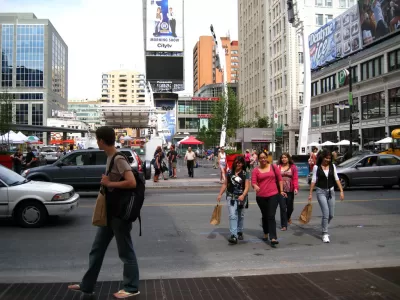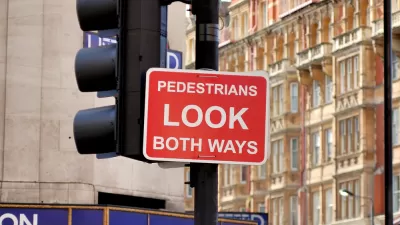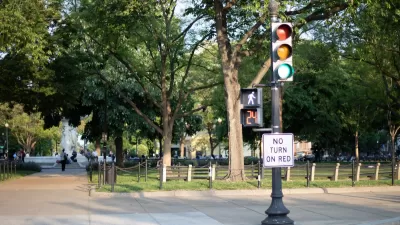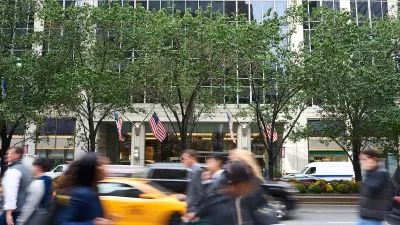Angie Schmitt and Charles T. Brown make nine arguments against the criminalization of jaywalking.

"As two of the top experts on pedestrian safety in the country, we think it is time for cities to consider decriminalizing jaywalking or eliminating the infraction altogether," urge Angie Schmitt and Charles T. Brown.
Schmitt and Brown make their argument in nine points after positioning the gravity of the situation with a reminder of the police killing of Kurt Andreas Reinhold who was stopped for jaywalking. "Black and Brown people, especially men, are routinely targeted by police for jaywalking or simply existing in public space. Often these stops result in an escalating series of fines and fees. In other cases — as in San Clemente, as well as in Sacramento, Seattle and New York City — they can end in violence" write Schmitt and Brown.
With origins in auto company boardrooms, the idea of jaywalking is a concept developed to shift the blame away from reckless drivers who kill pedestrians. Framing jaywalkers as incompetent or stupid, "jaywalking laws succeeded in creating a perverse 'moral basis' for pedestrian deaths in the minds of the public," according to Schmitt and Brown.
The pair point to poor street design as one key cause of pedestrian deaths. "Jaywalking may be the most rational choice given a host of bad options," say the experts. Punishing the jaywalker is unconscionable because, as Schmitt and Brown put it, "[c]riminalizing a rational, predictable response to poor infrastructure is unjust."
FULL STORY: 9 Reasons to Eliminate Jaywalking Laws Now

Americans May Be Stuck — But Why?
Americans are moving a lot less than they once did, and that is a problem. While Yoni Applebaum, in his highly-publicized article Stuck, gets the reasons badly wrong, it's still important to ask: why are we moving so much less than before?

Using Old Oil and Gas Wells for Green Energy Storage
Penn State researchers have found that repurposing abandoned oil and gas wells for geothermal-assisted compressed-air energy storage can boost efficiency, reduce environmental risks, and support clean energy and job transitions.

Placekeeping: Setting a New Precedent for City Planners
How a preservation-based approach to redevelopment and urban design can prevent displacement and honor legacy communities.

San Francisco’s Muni Ridership Grew in 2024
The system saw its highest ridership since before the Covid-19 pandemic, but faces a severe budget shortage in the coming year.

Colorado Lawmakers Move to Protect BRT Funding
In the face of potential federal funding cuts, CDOT leaders reasserted their commitment to planned bus rapid transit projects.

Safe Streets Funding in Jeopardy
The Trump administration is specifically targeting bike infrastructure and other road safety projects in its funding cuts.
Urban Design for Planners 1: Software Tools
This six-course series explores essential urban design concepts using open source software and equips planners with the tools they need to participate fully in the urban design process.
Planning for Universal Design
Learn the tools for implementing Universal Design in planning regulations.
Heyer Gruel & Associates PA
City of Moreno Valley
Institute for Housing and Urban Development Studies (IHS)
City of Grandview
Harvard GSD Executive Education
Salt Lake City
NYU Wagner Graduate School of Public Service
City of Cambridge, Maryland





























